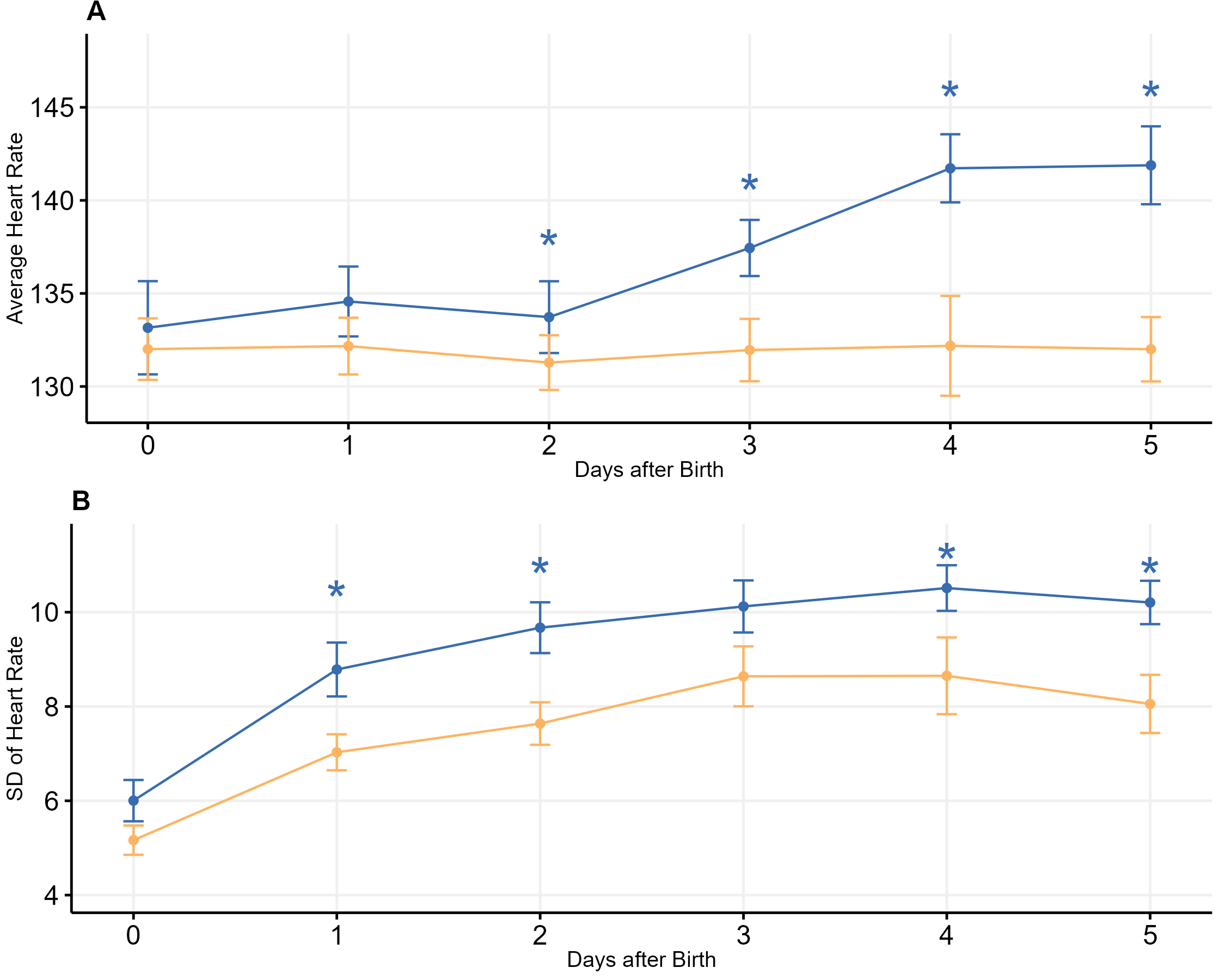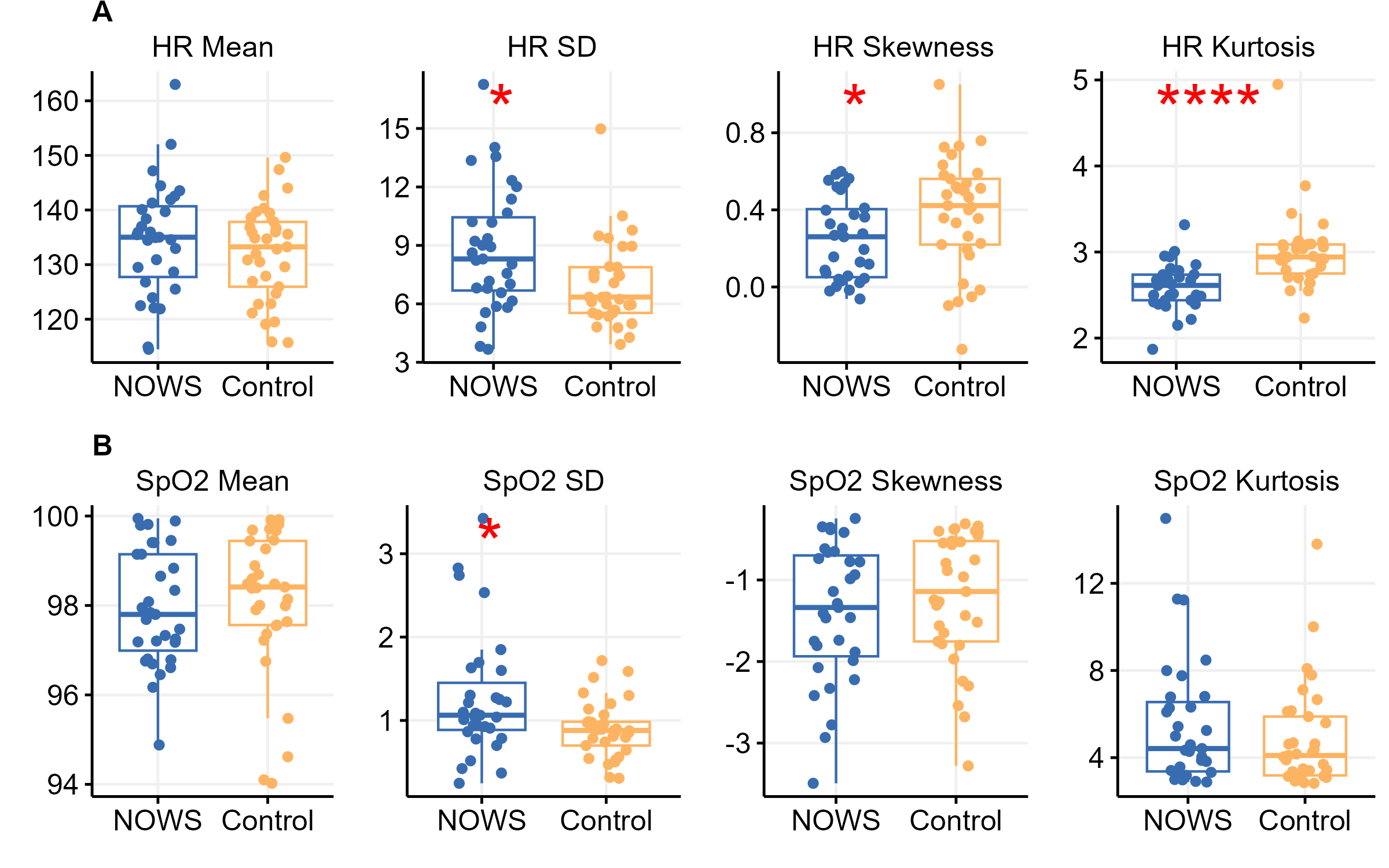Newborn Care
Session: Newborn Care
212 - Characterizing Cardiorespiratory Patterns Associated With Neonatal Opioid Withdrawal Syndrome
Friday, May 3, 2024
5:15 PM - 7:15 PM ET
Poster Number: 212
Publication Number: 212.210
Publication Number: 212.210

Brynne A. Sullivan, MD, MSCR (she/her/hers)
Assistant Professor
University of Virginia
Charlottesville, Virginia, United States
Presenting Author(s)
Background: Neonatal opioid withdrawal syndrome (NOWS) is increasing due to rising rates of opioid use disorder among pregnant women. The current standard of care for NOWS assessment and treatment relies on scoring systems prone to low interrater reliability. NOWS affects cardiorespiratory physiology through autonomic nervous system dysfunction. Thus, we hypothesized that pulse oximetry-derived heart rate (HR) and oxygenation (SpO2) metrics could detect objective, physiologic signatures of NOWS.
Objective: To characterize cardiorespiratory patterns associated with NOWS.
Design/Methods: We analyzed archived HR and SpO2 data collected every two seconds at two centers for infants born at 36-41 weeks gestational age (GA) with and without NOWS. The mean, standard deviation (SD), skewness, and kurtosis of HR and SpO2 were calculated in 10-minute windows over the first five days after birth. These calculations were chosen to characterize HR and SpO2 as they describe the shape of a histogram of the data. The 10-minute HR/SpO2 metrics were summarized daily. Missing data were not imputed. We compared NOWS infants to controls with GA 36-41 weeks who had at least 24 hours of continuous monitoring for clinical care related to comorbidities not likely to affect HR or SpO2 (hyperbilirubinemia, hypoglycemia, transient tachypnea) and who had no in utero opioid exposure, no major congenital anomalies, and no diagnosis of withdrawal from other in utero substance exposure.
Results: We identified 37 infants with NOWS and 42 controls who had similar GA, sex, and birth weight (Table 1). NOWS infants were more likely to have White maternal race. Mean HR was significantly higher in NOWS infants compared to controls on days 2 through 5 after birth. SD of HR was significantly higher for NOWS infants on days 1-2 and 4-5. On Day 1, HR SD, skewness, and kurtosis were significantly different compared with controls, and SD SpO2 was significantly higher in NOWS infants (Figure 2).
Conclusion(s): In a small cohort of term infants, we found differences in HR mean, variability (SD), and fluctuations (skewness, kurtosis). SpO2 variability (SD) was higher for infants with NOWS compared to controls. These results generate hypotheses for further testing in a larger cohort to confirm cardiorespiratory signatures of NOWS and their timing.


.png)
